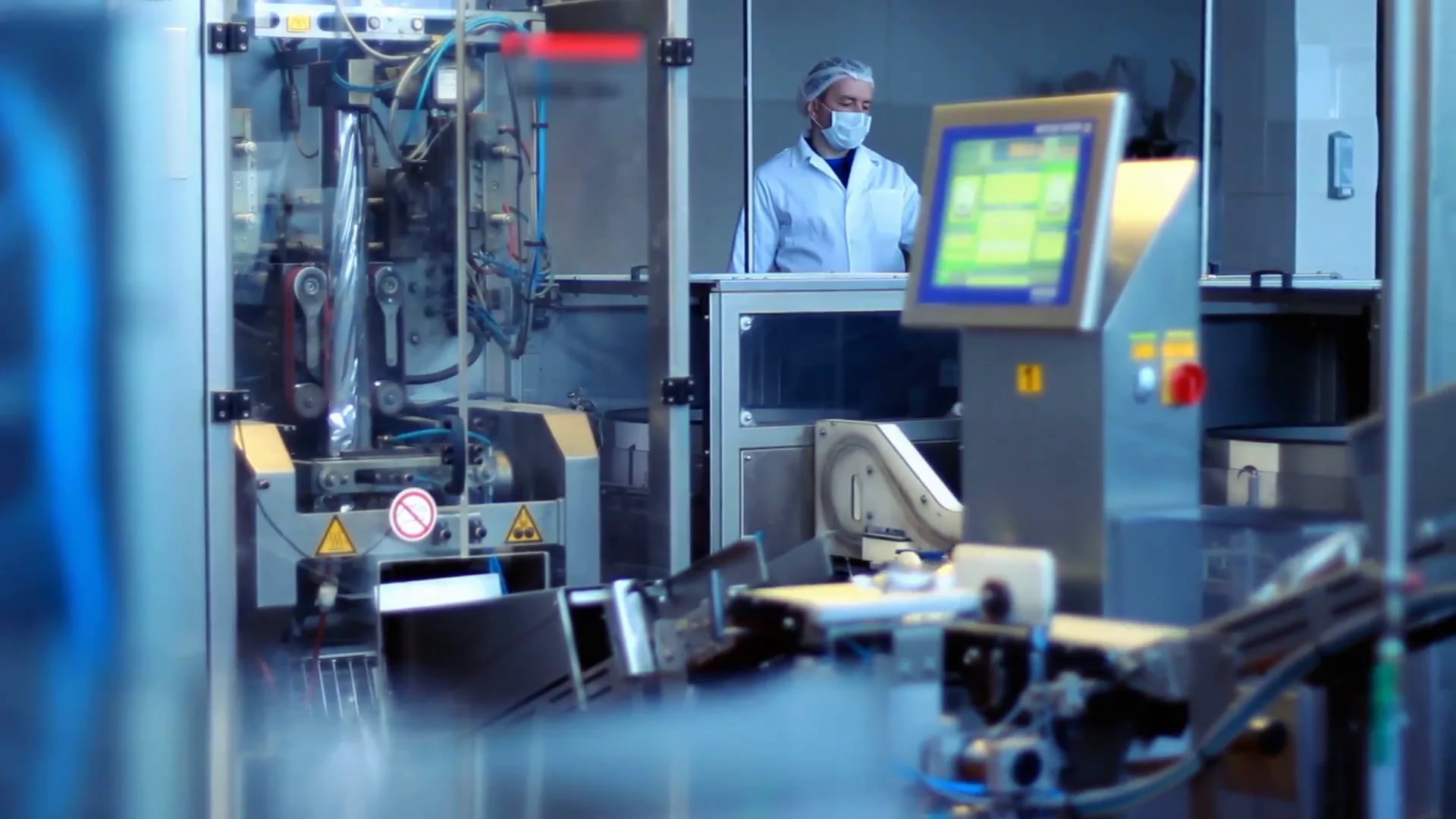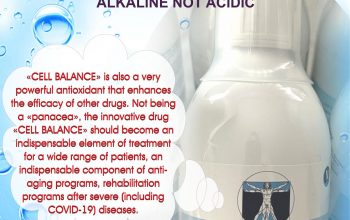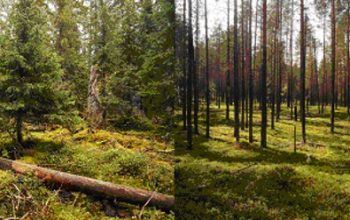
Shupeyko A. M.
PhD in Biotechnology IUFS, Master’s degree FGAOUVO ITMO University, St. Petersburg

Ishevsky A. L.
Doctor of Technical Sciences, Professor at the Faculty of Food Biotechnology and Engineering FGAOUVO ITMO University, St. Petersburg
UDK 637.146.3/663.05
Modern food packaging technology
Keywords: food raw materials, containers, barrier, and optical properties, multilayer films, biopolymers, environmental safety, extrusion, a protective layer, sealing, long-term storage, laminate, microflora development, aseptic packaging
Abstract: The article describes the stages of development of food packaging, its classification and the most widely used methods of application. The examples of innovative technologies in the world market are considered and the forecast of development of the most perspective directions in the packing industry is given.
For centuries, packaging has been an integral part of human life. The need arose when society had surpluses of food raw materials and products, and they needed means for their storage and protection, first animal skins, hollow tree trunks, large leaves and bark, then clay, various wooden containers and baskets of twigs. The most ancient artificial material is glass. About 5 thousand years ago, from it in Egypt, they first mastered the technology of glass container production. Metal began to be widely used as a packaging material only about a hundred years ago. In the 17th century, packaging paper was invented in Europe, and in the middle of the 19th century, the British invented waterproof paper asphalt, and in Europe and the USA, they began to use various paper bags and bags. Since 1880, decoration has been applied to cardboard and paper packaging, and it assumes the function of a carrier of advertising information. Tin cans were first used at the end of the 18th century, and tubes (tubes) made of tin, lead and aluminum since 1920. Particularly rapidly, the commodity industry began to develop by the middle of the twentieth century and, changing and improving, packaging took a worthy place in modern commerce. Packaging helps to predict consumption, and its main function has been and remains protective, thanks to which goods are brought to the consumer safely and securely. This means or a set of tools that protect the goods from damage and loss, and the environment – from pollution. According to GOST 17527, packaging should be understood as a “means or complex of means that protect products from damage and environmental losses from pollution, as well as ensure the process of circulation. At the same time, packaging must create a certain image of the product that meets the market’s needs, after all: «well-packed is half-sold». The degree of the economic state of the state is determined by the level of packaging costs per capita: the Japanese spend $ 450 a year, in the USA – from 340 to 400 dollars, in developing countries – from 50 to 100 dollars, in Russia – no more than 50 dollars. Packaging is now a crucial element in product development strategy. Preservation of quality and quantity of goods; ensuring the safety of consumer properties for a certain time and under specified conditions of transportation and storage; the formation of the quality of the goods; harmlessness and safety; demand generation; product identification and recognition; the provision of information about the product – the main functions of modern packaging.
Packaging is classified by packing; according to the degree of rigidity; on the functions performed in the process of commodity circulation; by the multiplicity of treatment; by design (reusable packaging); by levels of protection; by the number of packaged items; by appointment; by degree of originality; on the material of manufacture. Requirements for packaging are established by manufacturers of goods and government regulatory authorities. The set of requirements can be divided into three groups: fundamental (safety – preventing the transfer of harmful substances from the package to the product in contact with it; environmental friendliness – its ability to use and dispose of does not cause significant harm to the environment; reliability – the ability to maintain mechanical properties and tightness within the prescribed time under certain conditions of transportation and storage), additional (transportability and storage) and marketing (informative; esthete identity; recognition; subsequent applicability; adequacy to the product, brand, and customer; correspondence to sales channels).
Nowadays, the development and improvement of packaging materials refer to polymer films, new types of which have been used for packaging purposes for quite some time. It is the plastic film bags that replaced the paper bags and the design in stores. Modern reinforced films are highly durable and the possibilities of packaging films are very wide and varied.
First, multilayer elastic films are very resistant to perforation and cracking. They are also distinguished by a high degree of flexibility and excellent optical properties and are resistant to fogging. Secondly, flexible films intended for packaging in a modified atmosphere and under vacuum.
For the same purpose, multilayer films based on AquaFrost technology with high mechanical, shrinkage, barrier and optical properties are used. This kind of food film can be used for packaging products with temperatures up to 90 ° C. Bioform ecological film is made from polylactate and recyclable. It is used to make blister packs and trays for packaging fresh food products. The film of deep drawing, which prevents the formation of droplets – C-base, made of polypropylene, has high barrier properties and high transparency. Products in the C-base film can be pasteurized and cooked in a microwave. This type of film is intended for packaging sliced products and components of food products and ready meals.
Packaging for products in marinade Skin and Atmos created for self-service stores. Skin is a casing pulled from the bottom film into which the product is placed in the marinade. Suitable for oil marinades and emulsion-based marinades. Atmos packaging in combination with a modified atmosphere retains marinades for up to 14 days and adds shine to the product.
To protect food products today use multilayer films of polyamide series A, B and C, polyethylene and polypropylene. These films are flexible, have high barrier properties with respect to water vapor and the ability to weld. Layers of the film are sealed with special glue.
For packaging of cooled food raw materials and products, shrink films with barrier properties are used. These are durable bags with the effect of almost transparent “second skin”, are easy to process, do not contain chlorine and meet high economic requirements.
For packing stuffing designed packaging from biopolymers derived from natural raw materials (bioplastic). It does not contain harmful components that can go into a packaged product. Polyolefin-based elastic films, Aliprot, also do not contain chlorine and plasticizers (phthalates). They are environmentally safe and suitable for packaging fresh food products, including those with high-fat content. The film has a very good puncture resistance, high elasticity. This film can be used for manual and machine packaging on any equipment at temperatures from -25 to + 70 ° С.
In 2017, a unique design development PAZLPAK was presented, representing a two-component plastic form for enriched liquid products, including yogurts, milk formulas, as well as sports and vitaminized drinks. The main task of PAZLPAK is to preserve all the useful qualities of the products. The principle of the “operation” of such a package is quite simple: in one form there is the main product, and in the other, there are vitamins and minerals. Immediately before use, it is necessary to activate the mechanism for mixing the contents of the containers – turn the plastic ring, inside of which there are special stoppers and knives that open the protective membranes. It is enough to make one movement and turn the containers relative to each other to get a useful and tasty product.
Standard packaging polymers (for example, polyethylene, polypropylene, and polyether) do not always provide reliable protection of the product during its storage in the package. To this end, the possibility of penetration of oxygen or moisture into the package is limited as much as possible. To enhance the barrier properties, the main packaging material is laminated; manufactured by the method of simultaneous extrusion or covered with protective films. The structure of modern packaging materials has become much more complex since the task of modern packaging is not only to protect the product from the effects of oxygen from air and water vapor but also to perform the functions of additional strength, tightness and repeated opening – to close the packaged product. Foil, as a protective material, does not always provide the desired level of protective properties of the package. Modern packaging, thanks to multilayer extrusion, create coatings that allow to combine protection, sealing and the possibility of the next closure of the packaging by the consumer, as well as to combine in one package such materials that cannot be combined during lamination. Thus, the film covering oxygen bonding consists of a passive protective layer of alumina with an active protective layer. The result is a transparent material with higher protective properties than foil, which allows the buyer to see the contents of the package.
Designed drying film, sealing the package under the influence of heat. It absorbs moisture from the air, which fills the free space inside the package, while you can tightly close the package (both soft and hard) after the first opening.
The most stringent requirements for protective materials are imposed when used to manufacture sterilized bags. Typically, the material for making such a package is a combination of another type of film, foil or protective material with layers of hermetic material between them. In addition, each layer plays a certain role to provide the necessary protection and the desired shelf life of the product. To prevent delamination and ensure reliable sealing, only special non-toxic types of adhesives are used. Modern material sterilized bags consists of a printed layer of polyester coated with molded polypropylene or nylon. The transparency of the material makes it possible to see the product inside the package, however, this material allows the product to be heated in this package in a microwave oven. In order to quickly and easily open the package, and then close it, use a zipper-lock that withstands harsh sterilization conditions. Perhaps the next step in this direction will be the creation of ventilation of the product inside the package. This is a very difficult task since the vent must withstand the sterilization process and simultaneously release steam when heated.
One of the most promising types of packaging for food products is packaging from materials that are biodegradable. They are obtained from annually updated materials. One of the corn-based biopolymers, polylactide, can be an alternative to thermoformed containers. Studies have shown that most buyers perceive products packaged in natural materials as the most suitable for long-term storage.
Currently, one of the main types is “active” (in a modified atmosphere) and “aseptic” packages.
“Active” packages are packaged in a modified atmosphere (MAP) or a modified gaseous medium (MAP). With the increase in food supplies, the demand for packaging has increased. IDA features are to replace the air in the package with a mixture of gases, with a selected composition. This composition depends on the type of packaged product. It inhibits the degradation process occurring in the product. The IDA has undergone constructive changes over the past decades, and now this method has been connected to the “active packaging” system. During the decade, the number of manufactured packages of IDA has more than doubled. Carbon dioxide is usually used at high concentrations and is characterized by strong inhibitory properties that slow down the development of bacteria and mold. The main composition of IDA is carbon dioxide, oxygen, and nitrogen. Basically, carbon dioxide is used in 20% concentration, and only in a few cases, it is characterized by a strong inhibitory property, which slows down the development of bacteria. The inhibitory property has not yet been fully studied, but experiments have shown that other factors sometimes appear here besides the oxygen removal factor. The solubility of CO2 leads, in extreme cases, to the “shrinkage” of packaging on products, which is not a desirable effect. A high concentration of CO2 and water content leads to the appearance of a sour taste on the surface of the product. Nitrogen does not affect the stability of the packaged product and does not inhibit, however, the use of nitrogen ensures maximum removal of oxygen residues, thereby eliminating the effects of anaerobic bacteria and prevents fats from oxidizing. To avoid the presence of oxygen in the package, launch a system in which the number of aerobic bacteria grows. In the MAP system, it is necessary, especially carefully, to monitor the oxygen content in the package. The composition of the gas mixture depends on the type of product. The main components of the material for the production of packages are laminate of PTE / PE, the laminate of PTE / PE, films from VDC copolymers, the laminate of cellophane with polyethylene, PET and PA films in the form of sleeves, from which air is removed by thermal shrinkage of the product being packaged. With the advent of PA / PE laminates, packaging in a modified atmosphere was combined with preliminary thermoforming. Advantages of MAP packaging: preserving nutritional properties and significantly extending product stability.
A promising area for the development of packaging material technologies is the use of “active packaging”. The system of “active packaging” has a positive effect on the product, ensuring its high quality and storage time, and actively protects the product. Already, it is expected that this technology will have an impact on the development of the food industry. The scope of “active packaging” is very large. In “active packages”, the system provides a positive effect by introducing into the package chemical or enzymatic substances that adsorb and eliminate oxygen from the atmosphere inside the package; due to the use of preservatives released from the packaging material; through the use of humidity regulators; through the use of technologies that control odor and taste; by controlling the content of ethylene in the package and the release of ethanol in the form of vapor inside it, as a factor inhibiting the development of microflora; due to the use of light absorbers; by introducing into the packaging of substances that create carbon dioxide; through the use of films that emit mineral matter and preserve the color of the product; by changing the permeability of the film; due to the use of susceptors, films controlling the heating of products in the microwave oven.
The complete elimination of oxygen, even in the case of vacuum packaging, and flushing with an inert gas is almost impossible. Even a very small amount of oxygen in the package degrades the quality of the product. Removal of these residues protects against fat oxidation; color changes; microbial growth; changes in smell and taste; exposure to pests. To reduce the oxygen level to a minimum, iron compounds can be used: iron oxide and iron carbonate along with catalytic systems and non-metallic and organometallic substances. The funds of the Japanese company Mitsubishi – “Freshman”, after a few hours, reduce the oxygen residues to less than 0.01%, keeping this content for several months.
A few more words about gas mixtures and barrier films used in IDA technologies. The basis of the current IDA technology consists of three gases, each of which has its own special function in the process of increasing the shelf life of the product and suspending microbiological growth. These are nitrogen (N), carbon dioxide (CO2) and oxygen (O2). The use of gas composition suppresses the growth of microorganisms on the surface of the food product, maintaining its microflora at the required level, retains the original flavouring, aromatic and other properties for a certain time, regulates the release from the product and the penetration of oxygen through the packaging, and also significantly increases the shelf life of the product without changing his qualities. When packing fresh food into the gas medium, a constantly low temperature is required. The effect of carbon dioxide increases with decreasing temperature because it absorbs the product better. Best of all, carbon dioxide prevents the growth of bacteria at a temperature of 0ºС. In order to achieve the desired preservation of the product during gas packaging, it must be initially fresh and with a low initial concentration of microorganisms. The safety of the product is higher, the lower the initial concentration of bacteria. In addition, the composition of the initial bacteriological flora (sanitary and hygienic conditions during processing, storage and transfer to packaging, temperature conditions, etc.) affects the safety of the product. The following requirements are imposed on packaging for storing a product in a gas-modified environment: complete tightness; chemical inertness; environmental Safety; food tolerances; high barrier properties (no transmission of oxygen, moisture, corrosive media inside, the gas modified environment from the inside to the outside). At the same time, when packing in MAP, both “lower” material (tray, glass) and upper (film) should have barrier properties. Barrier films – polymer flexible packaging materials for hermetic sealing of plastic trays with products. As a rule, films have five or more layers and are produced by the method of blown coextrusion and lamination. The outer layers of the film must be made of plastic materials with food tolerances, and the inner layer must contain a barrier polymer that provides the barrier properties of the entire package. When packing in a gas-modified environment, the strength properties of the welded joint where the top film is welded to the container is very important. In this place, as a rule, the package filled with a mixture of gases begins to pass through the gas – promoting the penetration of oxygen and the resumption of oxidative processes.
Aseptic packaging systems are the future, as now the field of application of aseptic packaging is not limited to liquid products. These systems are filled with pre-sterilized packaging and then sealed under strictly sterile conditions. To select the appropriate thermal stabilization conditions, the pH value of the product is of fundamental importance. Useful properties of systems with aseptic packaging: a more short-term exposure to high temperature, allows you to save nutritional advantages, taste; packaging in a sterile area using sterile air overpressure; sterilization of the product is carried out for a certain short period of time, through the high-temperature section and cooling; long shelf life of products without refrigerated storage; obtaining additional protection of products by introducing inert gas into the packaging; high level of disinfection packaging material or packaging. The versatility of aseptic packaging systems for products determines their ability to transport and store for long periods without using reduced temperatures.
References:
Ilina, Z.M. Global challenges and sustainability of national food security. In 2 books. Prince 2 / Z.M. Ilyin. – Minsk: Institute of System Studies in the Agroindustrial Complex of the National Academy of Sciences of Belarus, 2012. – 161 p. – ISBN 978-985-6927-05-1.
- Ishevsky A.L. Consumer basket balance: Poultry meat market in St. Petersburg. Chickens, Moscow, publishing house “Sphere”, №2 (06), 2011, pp.24-28Основы современных технологий переработки мяса, часть 1,2., М,1994;
- Kyme. meat processing technology. German practice. SPb, Profession, 2006.
- Heads AF, Storage and processing of vegetables, fruits and berries, M., 1969;
- A.Sokolov, Physico-chemical and biochemical bases of the technology of meat products, M., 1965;
- Water in food. Edited by R. B. Dakuort – per. from English., M., Food Industry, 1980, 376.
- Luc, M. Yager. Preservatives in the food industry. Properties and application. St. Petersburg, “Giord”, 1998.
- Ishevsky A.L., Shulga A.S. Spectrophotometry as a method of quality raw meat. Meat technologies, №2 (62), Moscow, 2008, pp.52-53
- Ishevsky A.L., Brodov A.P. Improving the process of smoking. Meat technologies, №10, Moscow, 2010, p. 52-55.
- Ishevsky A., Shleikin A., Danilov N., Gorbatovsky A., Domoratsky S. Changes in the functional properties of enzymes during heat treatment of meat products. Collection of materials of the IY International Scientific Conference “Meat Technologies and Nutrition”, Poland, Poznan, June, 2010, p.163-165



